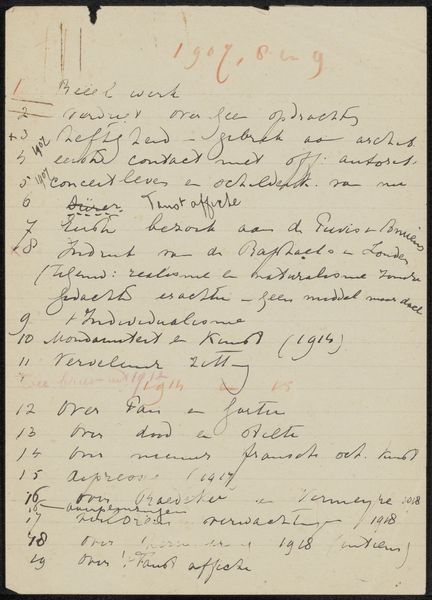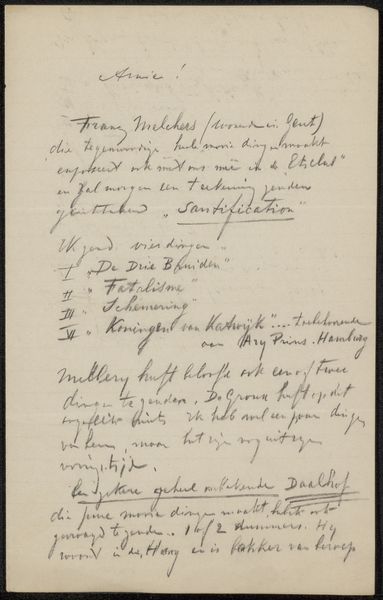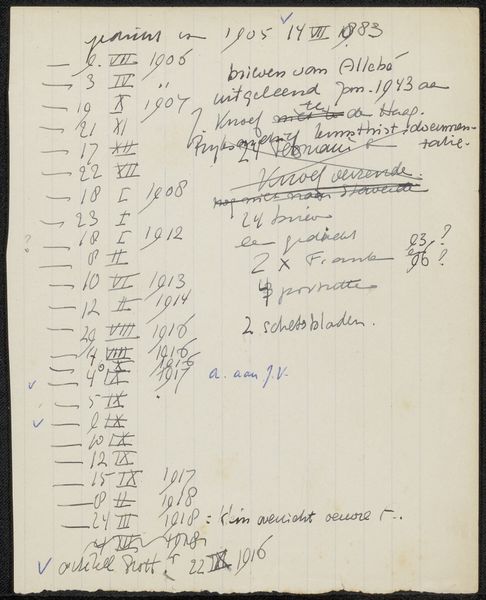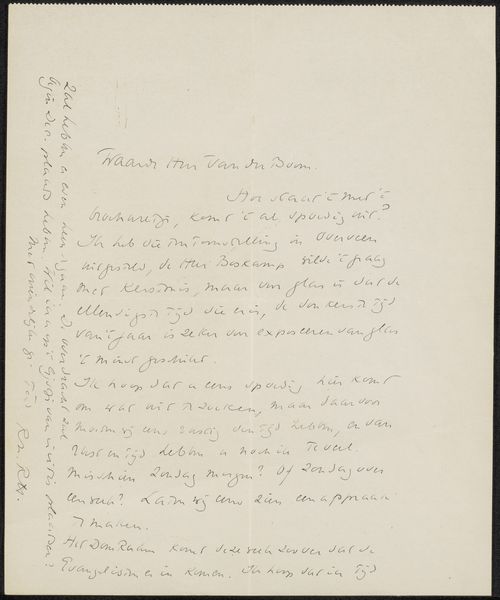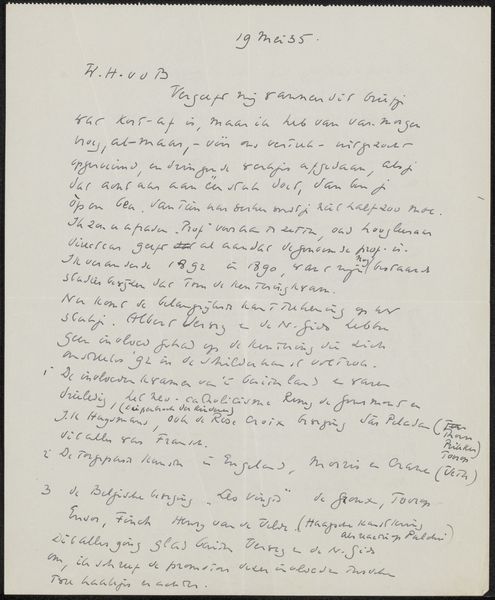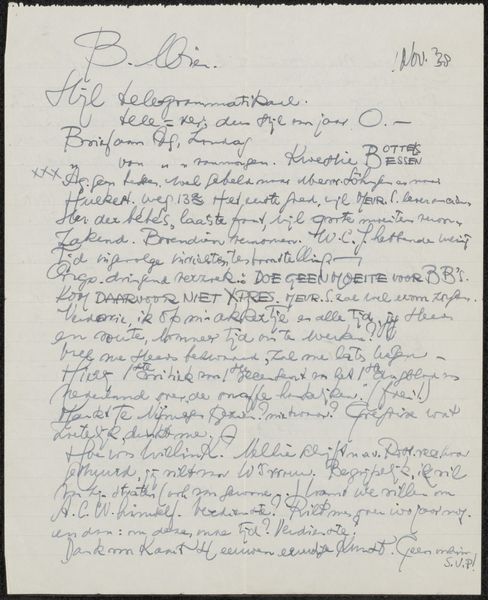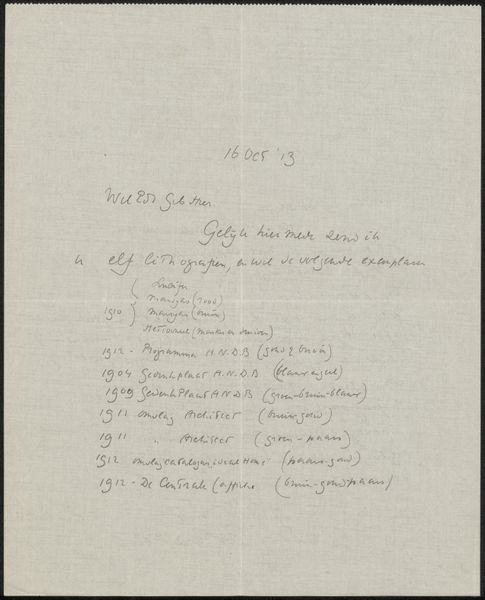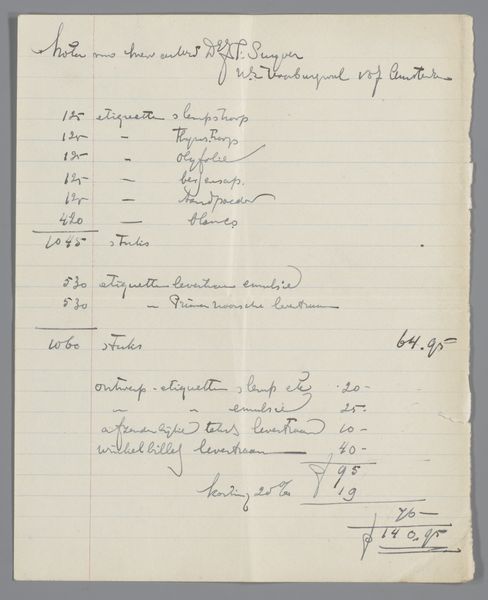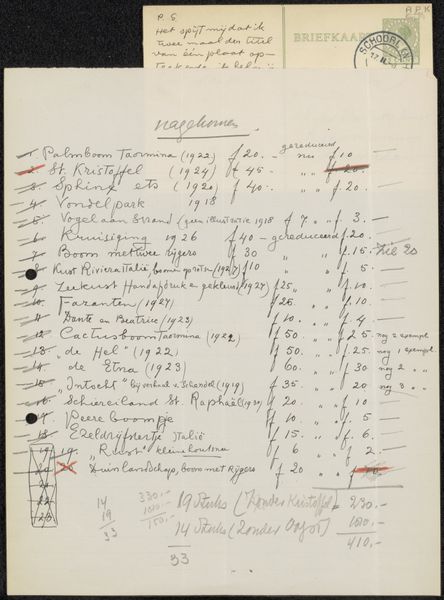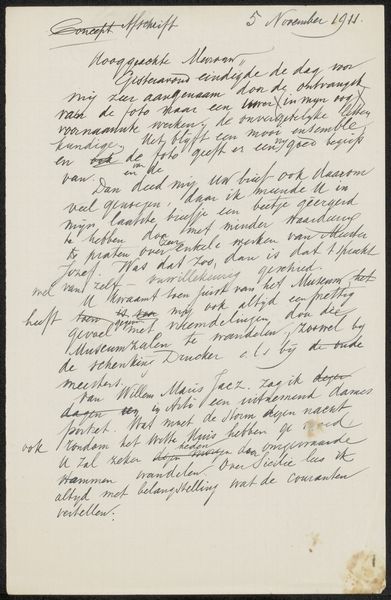
drawing, paper, ink
#
drawing
#
hand-lettering
#
ink paper printed
#
hand drawn type
#
hand lettering
#
paper
#
personal sketchbook
#
ink
#
hand-drawn typeface
#
ink drawing experimentation
#
ink colored
#
sketchbook drawing
#
sketchbook art
Copyright: Rijks Museum: Open Domain
Editor: We're looking at "Brief aan jonkheer Hendrik Teding van Berkhout (1879-1969)" possibly from 1931 by Bernard Essers. It appears to be a handwritten letter, with lots of crossed-out words and numbers, so almost a chaotic feel. What do you see in this piece that might shed light on its meaning or context? Curator: Immediately, I see a fascinating glimpse into the economic realities of the art world. This isn't just a personal note, it's a price list related to an exhibition with F. Visser, revealing the artist's negotiation with potential buyers and hinting at the societal value placed on art at the time. It almost feels like eavesdropping on a private financial conversation. Editor: That's interesting! So, the corrections and crossings-out...they aren't just aesthetic, but about pricing? Curator: Exactly! Consider the social and institutional context. Essers is writing to a "jonkheer," a nobleman, suggesting a certain level of patronage and the class dynamics inherent in art sales. The mention of a previous exhibition highlights the importance of institutional validation for artists seeking financial stability and broader recognition. Are you aware of the impact the economic crisis of the 1930s may have had? Editor: Vaguely. It sounds like those realities probably played into how artists positioned themselves and their pricing at the time. Was Essers's pricing accessible to the masses, or was art largely for the wealthy? Curator: Precisely the point! While the prices may seem low to us now, contextualizing them within the socio-economic landscape reveals that art ownership was likely concentrated among a privileged class. This artwork prompts questions about the role of art in society: is it a commodity, a status symbol, a form of communication, or all of the above? Editor: I never considered a handwritten letter offering prices in that way. I think this reframes how I see the work; it’s more than just a drawing, but a piece of socio-economic history. Curator: Indeed, by analyzing art through the lens of social and economic forces, we can gain deeper insights into its cultural significance and its role in shaping society. I, too, now appreciate Essers' business approach to selling art.
Comments
No comments
Be the first to comment and join the conversation on the ultimate creative platform.

